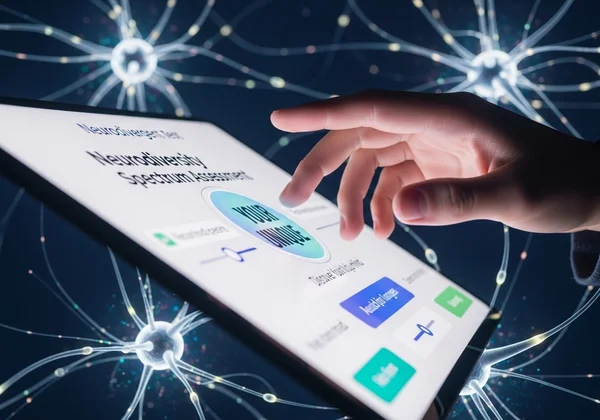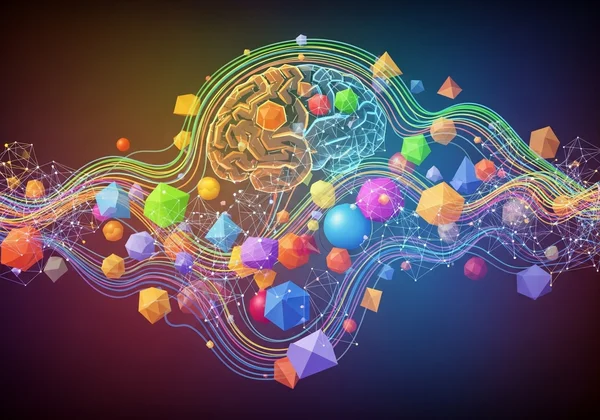Free Neurodivergent Test: Understanding Neurodivergence Beyond Common Types
Perhaps you've always sensed your thoughts follow a unique path. Maybe you notice patterns others miss, feel emotions with profound intensity, or find that your way of thinking doesn't quite fit the standard mold. If you've been exploring labels like ADHD or Autism but feel they don't capture your full experience, you're on the brink of a fascinating discovery. What are the signs of being neurodivergent? This question opens up a world far richer and more varied than most people realize. This article is your guide to the diverse landscape of neurodivergence, helping you understand the many ways people perceive and interact with the world.
The journey to understanding your unique neurological profile is deeply personal, and it often begins with a single question. While this article provides information, a great first step is to take a preliminary neurodivergent test with a tool designed for self-discovery. A neurodivergent test can offer a framework for your feelings and experiences, providing validation and a path forward. It's about empowering yourself with knowledge, not about fitting into a box.

Understanding the Broader Neurodiversity Spectrum
When we talk about neurodiversity types, many people’s minds immediately jump to Autism (ASD) and Attention-Deficit/Hyperactivity Disorder (ADHD). While these are significant and widely discussed aspects of neurodivergence, they are only a part of the diverse and complex range of human thinking. The neurodiversity paradigm is a shift in perspective, viewing these differences not as deficits, but as natural and valuable forms of human variation.
This view suggests that just as diverse species strengthen an ecosystem, diverse ways of thinking strengthen society, fostering innovation and compassion. Embracing this view allows us to celebrate different cognitive styles and create environments where everyone can flourish. For more information on neurodiversity advocacy and resources, consider visiting organizations like the Autistic Self Advocacy Network (ASAN) or CHADD for ADHD support.

What is Neurodiversity Beyond Common Perceptions?
Simply put, neurodiversity is the understanding that brain differences are normal and valuable. It encompasses a wide range of neurological variations, each with its own set of characteristics, challenges, and strengths. Thinking of it as a spectrum helps us understand that these are not rigid categories but fluid concepts.
This perspective challenges the medical model that often pathologizes these differences, instead promoting a social model that focuses on removing barriers and fostering acceptance. Understanding human variation in neurology is the first step toward building a more inclusive world for everyone, from classrooms and workplaces to our own families and friendships.
Neurotypical vs. Neurodivergent: Key Distinctions
To understand neurodivergence, it helps to understand its counterpart: neurotypical. A neurotypical person has a brain that functions in ways that are considered standard or typical by society. Their cognitive, social, and sensory processing aligns with the dominant societal norms. There is nothing inherently better or worse about being neurotypical; it is simply the most common neurological configuration.
A neurodivergent person, on the other hand, has a brain that functions differently. This can manifest in how they learn, communicate, perceive the world, or manage their emotions and attention. It’s crucial to understand that this isn't a comparison of "right" versus "wrong" but of "different." Taking a neurodivergent traits quiz can be an insightful way to see where your own patterns might align.
Exploring Specific Neurotypes and Their Unique Strengths
Beyond the well-known neurotypes, there are many other neurotypes that contribute to the rich tapestry of human cognition. Recognizing these less-discussed variations is key to fostering true understanding and self-acceptance. Let's explore a few of these, focusing on the unique strengths they often bring.

Dyslexia: Strengths in Visual & Creative Thinking
Often misunderstood as simply a difficulty with reading, dyslexia is a different way of processing information. While reading and writing can be challenging, dyslexic individuals frequently exhibit remarkable dyslexia strengths. Many are exceptional big-picture thinkers, capable of seeing connections and patterns that others miss.
Their brains are often wired for strong 3D spatial reasoning, making them naturals in fields like engineering, architecture, and the arts. Dyslexic minds excel at creative problem-solving and narrative reasoning. They don't just see the letters on the page; they see the world of possibilities behind them.
Dyspraxia: Unique Thinking & Coordination Traits
Dyspraxia, also known as Developmental Coordination Disorder (DCD), affects motor coordination. An individual with dyspraxia might struggle with tasks requiring balance, fine motor skills, or sequencing movements. However, focusing only on the challenges misses the incredible cognitive advantages that often accompany these dyspraxia traits.
People with dyspraxia are often highly empathetic, strategic, and determined thinkers. To navigate a world not built for them, they develop exceptional problem-solving skills and a resilient, out-of-the-box approach. Their creativity and unique perspective make them valuable team members and innovators.
Tourette's Syndrome: Beyond Tics to Hidden Strengths
When Tourette's syndrome is explained, the focus is usually on tics—the involuntary movements and vocalizations. But there is so much more to it. Tourette's is a neurological condition that also brings a unique set of cognitive attributes. The constant need to manage or suppress tics can lead to enhanced cognitive control and a heightened awareness of one's own internal state.
Many people with Tourette's report high levels of creativity, a unique sense of humor, and incredible resilience. They learn to navigate social situations with a level of self-awareness that can foster deep empathy and compassion for others.
Dyscalculia, Synesthesia, and More: A Diverse Landscape
The spectrum continues to unfold with many other neurotypes. Dyscalculia is a specific learning difference that affects an individual's ability to understand numbers and mathematical concepts. Yet, these individuals often have strong verbal reasoning and creative talents.
Synesthesia is a fascinating neurological trait where the stimulation of one sense triggers an automatic experience in another sense—like seeing colors when hearing music or tasting words. This blending of senses can fuel immense creativity and a unique artistic perception of the world. These are just a few examples; the true diversity of the human brain is even broader and more fascinating.
Why Exploring Your Unique Neurotype Matters
Embarking on a journey of neurodivergent screening is more than just seeking a label; it's about seeking understanding. Learning about your potential neurotype can be a transformative experience, providing a new lens through which to view your entire life. It can reframe past struggles not as personal failures but as predictable challenges of a particular neurological wiring.
This knowledge empowers you to advocate for your needs, whether in education, the workplace, or personal relationships. It is the key to unlocking your potential and living a more authentic and fulfilling life. If you're curious about your own profile, a free neurodivergent test is an accessible place to begin.
Finding Validation & Community in Understanding
One of the most powerful outcomes of identifying your neurotype is the profound sense of validation. The feeling of "finally, it all makes sense" can be incredibly healing. It helps dissolve years of self-doubt or feeling "weird," "lazy," or "too sensitive." You realize you are not broken; your brain just works differently.
This understanding also opens the door to community. Connecting with others who share similar experiences creates a sense of belonging and mutual support. You find people who "get it," who can share strategies and celebrate successes, reminding you that you are not alone on this journey.

Embracing Your Brain's Strengths & Navigating Challenges
Understanding your neurotype allows you to shift your focus from your challenges to your strengths. By recognizing your brain's strengths, you can learn to leverage them. An autistic person might harness their intense focus to become an expert in their field. A person with ADHD might use their creative, non-linear thinking to drive innovation.
Simultaneously, this knowledge equips you with the language and framework to develop strategies for navigating challenges. It's not about "fixing" yourself, but about creating systems, environments, and support networks that work with your brain, not against it. This journey of self-discovery empowers you to build a life that honors your unique mind.
Your Journey of Self-Discovery Begins Here
Neurodiversity encompasses a vast and intricate range of human potential. Moving beyond common labels like ADHD and Autism reveals a rich spectrum of human minds, each with its own unique strengths and perspectives. Whether you identify with dyslexia, dyspraxia, or simply feel that your brain is wired differently, know that your experience is valid and your perspective is valuable.
Understanding your neurological profile is the first step toward self-acceptance and empowerment. It's a journey towards greater confidence, stronger relationships, and a life that truly celebrates your unique mind. If you're ready to take that first step, begin your neurodivergent self-discovery journey of exploration today.
Disclaimer: The information in this article and the neurodivergent test on this site are for educational and self-exploration purposes only. They are not a substitute for a professional clinical diagnosis. If you have concerns, please consult a qualified healthcare professional.
Frequently Asked Questions About Neurodiversity Types
What are the signs of being neurodivergent?
Signs of being neurodivergent are incredibly varied but can include differences in learning, communication styles, social preferences, sensory processing (being over- or under-sensitive to light, sound, or touch), attention regulation, and executive functioning (planning and organizing). It can also manifest as intense, focused interests or a highly creative, non-linear thinking style.
Can you be neurodivergent and not have ADHD or autism?
Absolutely. While ADHD and autism are two of the most recognized forms of neurodivergence, the spectrum is much broader. Conditions like Dyslexia, Dyspraxia, Dyscalculia, and Tourette's Syndrome are also forms of neurodivergence. Many people have a collection of traits that don't neatly fit any single category, which is perfectly normal within the neurodiversity framework.
How do you get tested for neurodivergence?
Formal testing for specific conditions like autism or ADHD is done by clinical psychologists, neuropsychologists, or psychiatrists. However, if you're just starting to explore your traits, a great first step can be how do you get tested for neurodivergence through a preliminary online tool. Our preliminary screening is a free, accessible way to gain initial insights and decide if further professional evaluation is right for you.
What are the strengths of a neurodivergent brain?
The strengths of a neurodivergent brain are as diverse as neurodivergence itself. They often include exceptional creativity, innovative problem-solving, intense focus (hyperfocus), strong pattern recognition, high levels of empathy, attention to detail, and a unique perspective on the world. By embracing neurodiversity, we can recognize and celebrate these incredible assets.